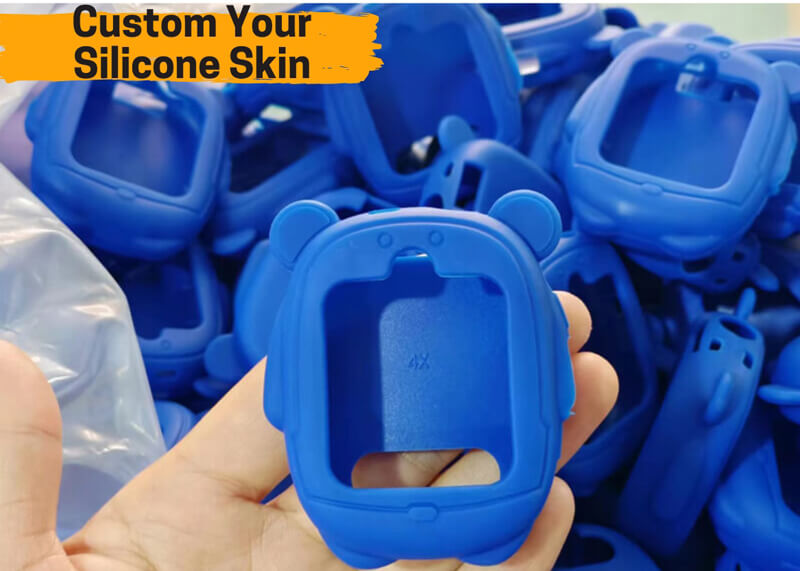For years, silicone has been used in mobile phone cases, iPad covers, electronic products, medical devices, and other industrial applications. Have you ever wanted to make a custom silicone skin for your company’s instrument…just like your iPhone case?
Silicone is the ideal material for cases, skins, and covers because it is durable, lightweight, and shock-absorbent. It is also non-toxic, heat-resistant, and waterproof, making it an excellent choice for protecting your device. Its flexibility also makes it easy to apply and remove, and it won’t scratch or damage your device. In addition, silicone cases and skins are available in a variety of colors and patterns to suit your tastes.
Most electronics/industrial equipment starts with a plastic enclosure but sometimes the plastic doesn’t offer enough protection. Silicone cases and skins can be custom molded around your product to assist with shock absorption, and protective shielding and can improve aesthetics.
While silicone offers innate benefits to custom cases, this optimal material needs to pair with optimal design and manufacturing techniques to get the most effective and functional result.
1. Design your custom silicone skin
Well-crafted silicone skins start with a good design. When designing your custom silicone skin/ cover, remember to follow the 3 points:
1.1 Understanding the function needed for the silicone skin
- Silicone case needed for impact/ drop-proofing— Increase protection at sensitive areas, usually around corners and edges. Add extra cushioning from drops and heavy everyday usage.
- Silicone skins designed to improve user interaction or branding–If you want your device to stand out and for your branding to shine bright, you can add your logos and specific features onto the silicone skins to give your product branding power.
- Silicone cases are designed to provide a secure grip to your device–you can design the silicone cases with a tactile surface for better grip. Silicone covers are often able to provide extra grip, making it easier to hold the device.
1.2 Ports and connections on the device that need to be accessible
If your device needs access points for functionality, you should create cut-aways, ports, and flaps for an uninterrupted user experience. Protecting your device does not have to limit its functionality.
1.3 The protective silicone skin thickness
2. Custom your silicone skin tooling requirement
Manufacturing custom silicone skin requires professional knowledge of tooling and molding production. Tool-making is one of the core processes in silicone skin development. Properly designing, building, and assembling requires a highly skilled team of engineers and technicians utilizing the latest in sophisticated design and manufacturing technologies.
Shrinkage
Tool surface finish
3. Custom your silicone skin manufacturing
Silicone raw material selection
- Tensile strength–For silicone cases ask for good rebound resilience and tear strength, high tensile strength silicone will be needed.
- Flame retardant— For some electric industry special applied silicone cases that used in high temperatures, flame retardant silicone will be needed.
- Material durometer— the silicone durometer will affect the assembly of silicone cases, if too soft, the silicone cases will be loose or deformed. If too hard, it will be hard to install/remove the cases from your devices.
Custom silicone covers surface treatment
- Oil spraying–oil spraying can give silicone covers a good hand-touch feeling. It also has an anti-static function to keep the cases from attracting dust.
- Printing–Print your company logo or slogan onto silicone covers to increase your brand awareness.
Cer Silicone is a professional silicone manufacturer offering custom silicone case solutions. From silicone case design to mass production, we offer full-stage support to get your custom molded skins designed and delivered in as soon as 2~3 weeks. Welcome to call us to put your custom silicone skin project into motion!

